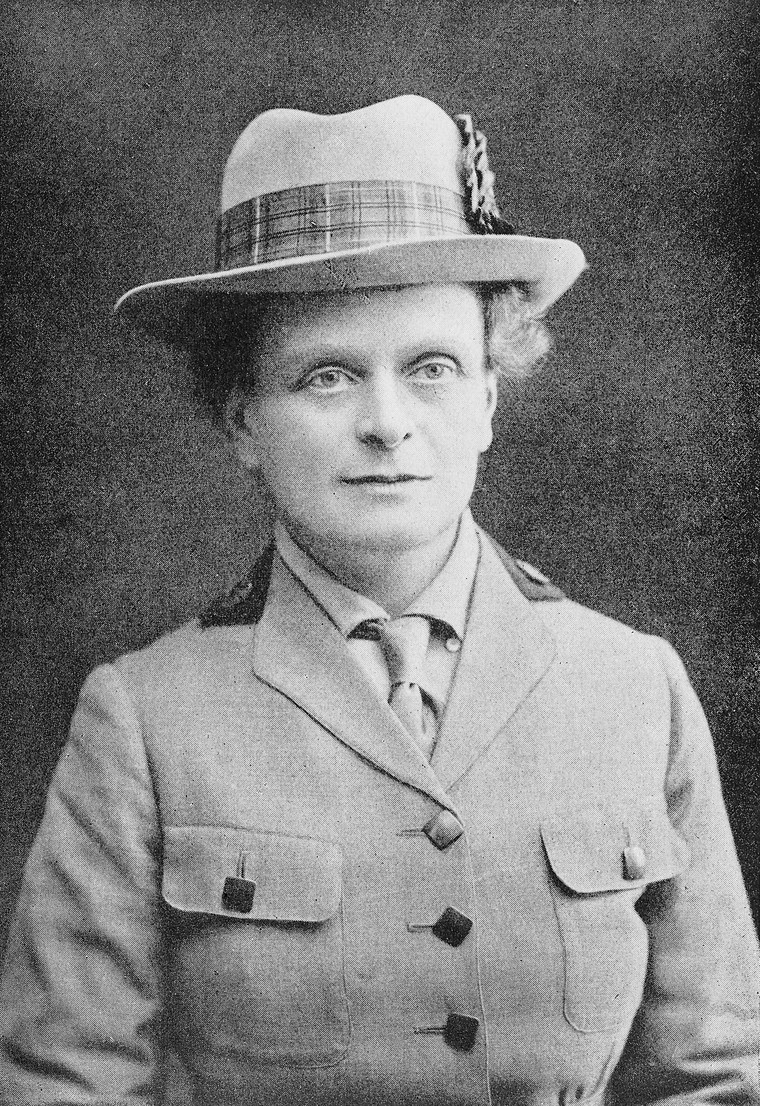Suffragettes: A 100 years of women’s suffrage

‘A special and important day to celebrate’ — Professor Aisha Holloway
Today, February 6th 2018 marks 100 years since women over 30 first got the vote following the passing of the 1918 Representation of the People Act. All men of 21 and older got the vote as a result of the Act but women had to wait another ten years. It was 1969 before the voting age was lowered to 18 for both men and women.
For me this is a special and important day to celebrate because nursing is a predominantly female workforce and the hard won Nurses’ Registration Act in 1919 came hot on the heels of women’s suffrage and the role nurses played in the First World War. This was certainly not a coincidence.
A special and important person to celebrate on this day is the surgeon and suffragette Dr Elsie Inglis who was a pioneer for women’s rights, health and welfare and an alumna of the University of Edinburgh. Indeed the Old Medical School Courtyard was recently named in her honour. Dr Inglis was born in 1864 in India where her father worked for the East India Company. After the family returned to Edinburgh, she studied medicine at the then University of Edinburgh’s ‘Revolutionary School of Medicine for Women’ and qualified as a doctor in 1894.
Inglis’s vision as a woman doctor was to raise awareness of the poor conditions and improve standards of care for many of the city’s women. She decided to do this by providing all-women services by nurses, doctors and others. In 1894 she opened the ‘Nursing Home for Working Women’ in George Square with an all-female staff which then moved to the High Street in 1904. It is said that her work in the community where she witnessed many inequalities especially for women made her very aware of the need to promote their rights. This motivated her to become an active suffragette, forming the Scottish Women’s Suffragette Federation in 1906.
With the advent of the First World War in 1914 Inglis proposed setting up a number of female only units to treat the British troops fighting on the Western Front (France, Belgium and Serbia). Her proposal to the War Office was met with the patronising response ‘My good lady, go home and sit still’. Following further rejection by the Red Cross and the Royal Army Medical Corps she was undeterred and founded the Scottish Women’s Hospitals Committee which oversaw the establishment of four Scottish Women’s Hospitals and 14 medical units across Europe. The hospitals were staffed only by women who were nurses, doctors, cooks, drivers, cooks as well as surgeons.
The Scottish Women’s Hospitals were well known for their much lower mortality rates than traditional military hospitals operating at that time despite coping with a horrendous typhus epidemic, typhoid and cholera as well as the terrible injuries suffered by the soldiers in the trenches and thousands killed.
Dr Inglis survived being a prisoner of war and returned to Edinburgh where she sadly died in November 1917. Although she did not survive to see the Armistice or votes for women they are an important part of her legacy. It is fitting therefore that Dr Inglis’ legacy and life were celebrated on the centenary of her death in St Giles’ Cathedral in November 2017. It is equally fitting that we remember her today as a suffragette and a carer who combined both passions to defend women’s rights, health and welfare.
Pam Smith,
Professorial Fellow
(Sources: Undiscovered Scotland 2000-2018; Dr Elsie Inglis to be honoured: The Herald: Sunday Herald, 22nd November 2017; Scottish Women’s Hospitals: Dr Elsie Inglis WW1s unsung hero)



Great stuff Pam. thank you